ASUS Starts Sales of ProArt PA32UC LCD with 384 Zone FALD, HDR, & DCI-P3
by Anton Shilov on March 14, 2018 12:00 PM EST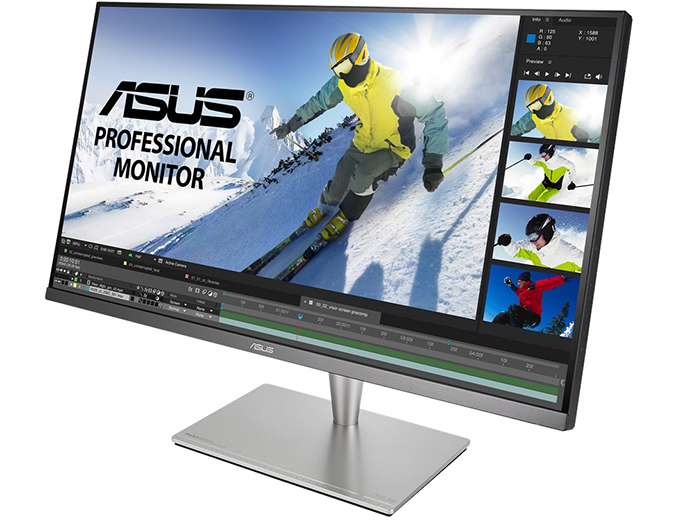
ASUS has started to ship its top-of-the-range ProArt PA32UC professional-grade display. The new monitor features a 4K resolution and supports pretty much every advanced display feature suitable for professional usage, including Rec.2020 and DCI-P3 color spaces, 384 zone backlighting to support HDR with a peak brightness of up to 1000 nits, a Thunderbolt 3 interface, etc. The monitor naturally comes pre-calibrated and is also compatible with appropriate hardware should owners want to recalibrate their devices It took ASUS approximately 15 months to polish off its ultra-high-end LCD*, which is now available at a hefty price.
The ASUS ProArt PA32UC display relies on a 32-inch 10-bit IPS/AHVA panel with a 3840×2160 resolution, 178°/178° viewing angles, and perhaps most cutting edge of all, full array LED backlighting technology featuring 384 LED zones for dynamic local dimming. FALD backlighting is common in TVs, but is almost unheard of in shipping PC montiors, with the PA32UC becoming one of only a couple of monitors to support the feature.
As a result of it's sizable backlighting system, the monitor has a typical brightness of 400 nits as well as a peak brightness of 1000 nits for appropriate content. The manufacturer rates the monitor’s static contrast ratio at 1000:1 (not so great for a pro LCD), a response time at 5 ms GtG, whereas the refresh rate is 60 Hz.
The ProArt PA32UC covers 85% of the Rec. 2020 (BT.2020), 95% of the DCI-P3, 99.5% of the Adobe RGB, and 100% of the sRGB color spaces, just like ASUS promised when it announced the display initially. The Adobe RGB color space is central for professional photographers and designers that need to edit photos or images for publications, whereas the sRGB, the DCI-P3, and the Rec.2020 color spaces are important for video editors and animation designers who do post-production work. Meanwhile, ProArt PA32UC’s DCI-P3 coverage is below 98% – 99% supported by displays aimed primarily at video professionals. As for the Rec.2020 gamut, its coverage at 85% cannot be called significant, but since there are few displays on the market that support this color space as an input, people working on content that will be broadcast in this color gamut will appreciate its support. Like many other professional displays, the ProArt PA32UC can simultaneously display images in different color spaces when Picture-by-Picture mode is used.
Moving on to HDR support. The ProArt PA32UC has an Ultra HD Premium certification, which means that it can hit certain brightness and contrast levels, and like other HDR montiors, Asus is using HDR10 here. The monitor features an internal 14-bit LUT that support Gamma values of 2.6, 2.4, 2.2, 2.0, and 1.8 for smoother color gradients. ASUS calibrates all the ProArt PA32UC monitors individually to DeltaE ≤ 2, but the LCDs are also compatible with hardware calibrators, such as the X-rite i1 Display Pro and the Datacolor Spyder 5 series (all the color values are stored internally).
As for connectivity, the ProArt PA32UC has two Thunderbolt 3 ports (one input, one output), four HDMI 2.0b headers, and one DisplayPort 1.2 input. It is noteworthy that the unit supports both HDCP 1.4 and HDCP 2.2 for mastering content for different platforms. The monitor also comes with integrated speakers and a USB hub supporting two Type-A and one Type-C connector.
The ASUS ProArt PA32UC is currently available from B&H Photo Video at an MSRP of $1999.99. Neither Amazon US nor Newegg currently list the display on their websites, so as of press time, B&H is the only store that carries the new monitor in the U.S. While the price tag is not low, I cannot say that it is unreasonably high. A professional 32-inch monitor with a DCI-P3 support tends to cost around $1,500 in the U.S. Given the fact that the ProArt PA32UC features FALD backlighting and HDR, along with Rec.2020 color gamut and other perks, it does not seem overpriced. It is not a reference monitor (which prices tend to hit ceilings) that is meant to enable 98% - 99% of the DCI-P3 coverage, so its DCI-P3 coverage of 95% of the range seems reasonable.
| Specifications of the ASUS ProArt PA32UC | ||
| Panel | 32" IPS | |
| Resolution | 3840 × 2160 | |
| Refresh Rate | 60 Hz | |
| Response Time | 5 ms gray-to-gray | |
| Brightness | Normal: 400 cd/m² Normal: 1000 cd/m² |
|
| Contrast | 1000:1 | |
| Viewing Angles | 178°/178° horizontal/vertical | |
| Color Saturation | 100% sRGB/REC 709 99.5% Adobe RGB 95% DCI-P3 85% Rec.2020 |
|
| Display Colors | 1.07 billion | |
| 3D-LUT | 14 bits | |
| Pixel Pitch | 0.1845 mm² | |
| Pixel Density | 137 PPI | |
| Anti-Glare Coating | Yes | |
| Inputs | 1 × DP 1.2 4 × HDMI 2.0b 2 × Thunderbolt 3 (input & output) |
|
| USB Hub | 2 × USB Type-A 1 × USB Type-C |
|
| Audio | 2 × 3 W speakers 3.5-mm mini jack |
|
| Mechanical Design | Chassis Colors: Gray Tilt: -5°~+23° Swivel: -60°~+60° Pivot: -90°~+90° Height Adjustment: 0~130 mm VESA Wall Mounting: 100×100mm |
|
| Power Consumption | Idle | 0.5 W |
| Active | 56.84 W at 200 cd/m² | |
It is noteworthy that the ProArt PA32UC will cost considerably more in different parts of the world than it does in the U.S. Amazon UK lists the ProArt PA32UC for £1,999.99 ($2,770), but the model is currently out of stock. Amazon Germany sells the new professional monitor for €2,547 ($3,135), but notes that it will take two or three business days to deliver it within the country. Meanwhile, techAU web-site reports that the ProArt PA32UC will be available in Australia in May for an MSRP of A$3,499 ($2,748).
*When ASUS formally introduced the PA32U at CES 2017, it indicated that the monitor would use quantum dots, but the press release announcing availability of the PA32UC does not mention this technology at all, which may indicate that the new LCD does not use quantum dots. Technically, the PA32U and the PA32UC are different monitors so the former does not have to feature quantum dots. Meanwhile, considering similar characteristics of both monitors as well as similar prices, it is unclear whether the PA32U will ever make it to the market. If it does, then it will have to offer a better color reproduction than the PA32UC to justify usage of quantum dots.
Related Reading:
- EIZO Announces ColorEdge Prominence CG3145: 4096x2160, 98% P3 and HDR10
- ASUS ProArt PA32U Display: 4K, 1000 Nits Brightness, 95% DCI-P3, 85% Rec. 2020
- LG Develops ‘Nano IPS’ LCD, Unveils 32UK950 4K Display with DCI-P3, HDR600, TB3
- Pre-Orders for LG’s 32UD99 Display Available: 4K, DCI-P3, HDR10, FreeSync for $999
- BenQ Launches the SW320: a 4K Display with HDR for Professionals


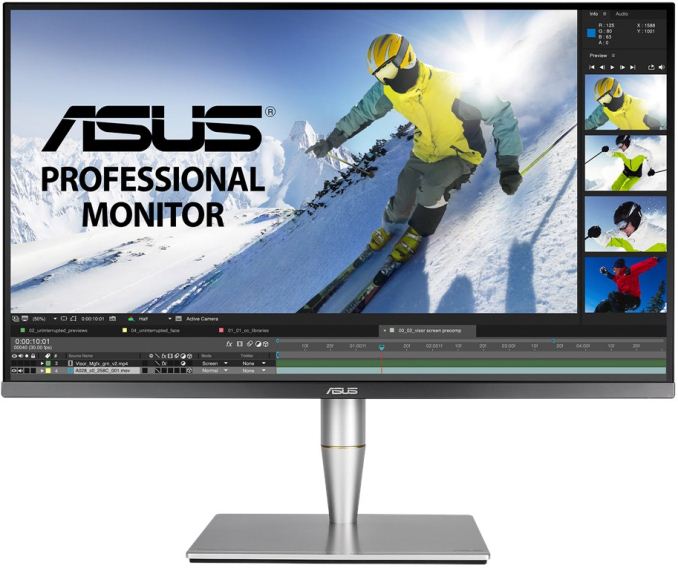
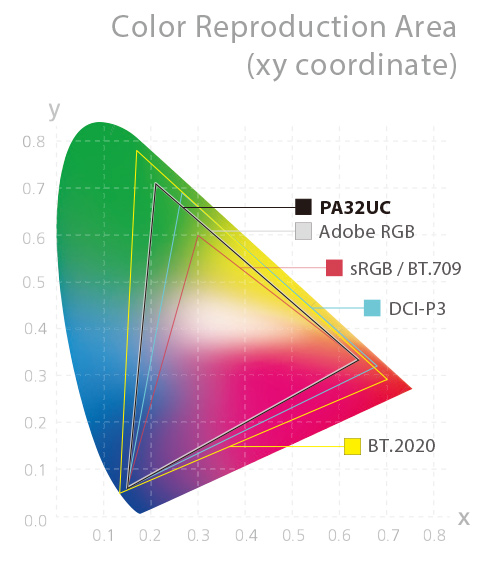
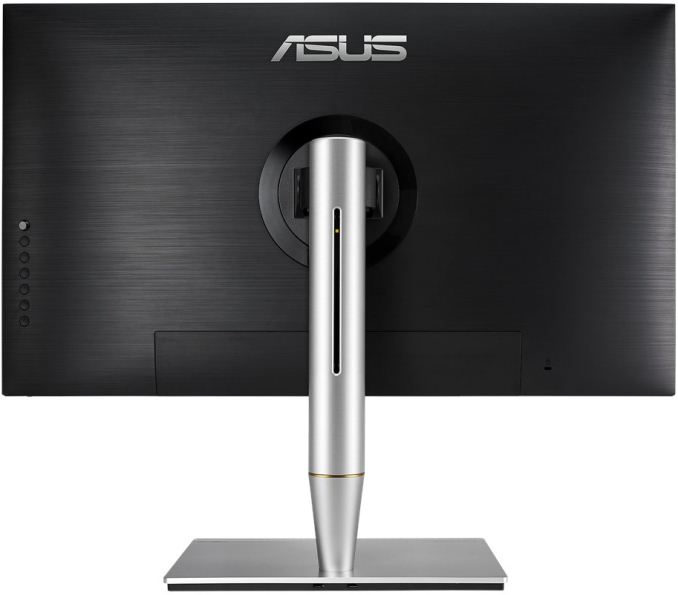
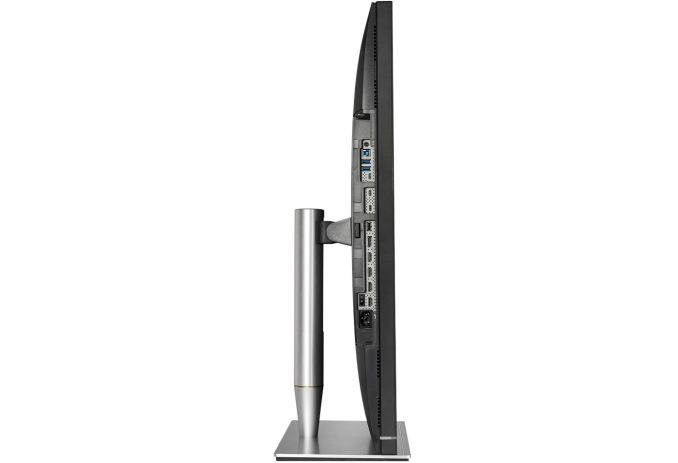














18 Comments
View All Comments
HStewart - Wednesday, March 14, 2018 - link
This would be an excellent monitor for 3D Graphics Artist especially for 3D Movie production - My combination was the same that was use for a lot of sci-fi movies especially Babylon 5 and also Star Trek - but Combination Lightwave 3D and Photoshop. I also see why Asus would be interested in making this monitor - because I sure many game developers and artist would love to use this monitor.One curiously - I would think that with 4K content both in movies and games, that they monitors should be 5k - so full 4k content be on screen and have enough resolution for controls. Of course one could always have dual screen.
DanNeely - Wednesday, March 14, 2018 - link
No personal experience, but when the issue was raised elsewhere, the response I've seen from people claiming to be pros was that it's always one monitor for full screen playback with all controls/etc on the second.HStewart - Wednesday, March 14, 2018 - link
Yes that is typical on the internet - I am no professional - but I have used the professional packages before - but it way too expensive for some of equipment. Most people probably are just gamers and look at the price and just wonder why it is so expensive. Only thing I notice that DCI-P3 is used for theatersMy version of Lightwave 3D is really old - 9.6 version now it is up to 2018 version and 9.6 was release in 2009. It looks like it did some of Star Wars movies from the following PDF.
http://static.lightwave3d.com/marketing/lightwave_...
Gothmoth - Wednesday, March 14, 2018 - link
lightwave is maybe used by 100 people in the biz.. it´s practically dead. try to find a job offer that ask for lightwave experience... good luck.mr_tawan - Wednesday, March 14, 2018 - link
For amature work like mine, dual full hd monitors is suffice for full hd video cut. One monitor stays at preview at all time, while the other screen are where I made the edit.StrangerGuy - Thursday, March 15, 2018 - link
I have zero interest in HDR at the moment, but I must say this is infinitely better product than that fake "HDR" crap BenQ tried to pull a while ago with the SW271.umano - Friday, March 16, 2018 - link
I've read a review comment on b&h and it's not promising. At that price in europe the nec PA is a better choice. Contrast is the same and for sure it will suffer less of color and luminosity bleeding.The good thing about the asus is the backlighting calibration for different areas of the screen, so even if the panel is not perfect we can adjust luminosity later. But it seems asus software doesn't work. So it is just an adobe rgb panel with hdr content support, but not editing ofc. Eizo just released its own 32 inches for hdr editing, 1000 nits, 1000.000 contrast ratio and 28k + taxes price tag. So until they fix their software it is way overpriced and the guy from the b&h wrote he had to recalibrate the day after due to serious white balance drifting. I wanted to buy this monitor but damn! :)
chriscalvert - Monday, May 28, 2018 - link
I am most unhappy to find that this monitor is considerably dearer in every other country than the US ! This means that we are basically subsidising the US who of all countries on this planet are the least deserving of a cheaper price. They have money coming out their ears and until somehow there is a reshuffle of the true cost of money and they have to pay back some of this excess we end up helping them get further in debt. Maybe with Trump there this might happen sooner rather than later.